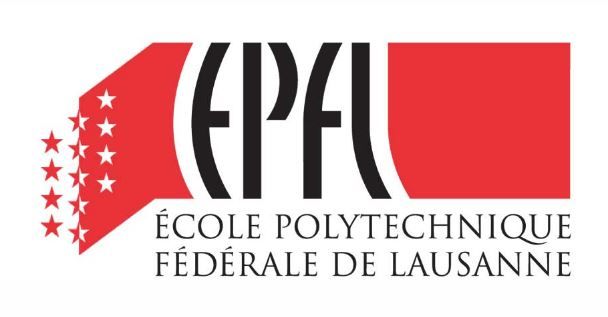
The École polytechnique fédérale de Lausanne make available to you free online course termed as “Introduction to Astrophysics”. The free online course is designed to give you knowledge about the physical phenomena at play in astronomical objects and link theoretical predictions to observations.
In this free online course, you will learn the basics of astrophysics using simplified mathematical developments. In particular, you will learn the role played by gravity in astrophysics, including gravitational lensing, and how matter and radiation interact. The course will start on April 1, 2017.
Course At A Glance
- Length: 7 weeks
- Effort: 2-4 hours per week
- Subject: Science
- Institution: École polytechnique fédérale de Lausanne
- Languages: English
- Price: Free
- Certificate Available: Yes
- Session: The course will start on April 1, 2017
Providers Details
- About University: EPFL is the Swiss Federal Institute of Technology in Lausanne. The past decade has seen EPFL ascend to the very top of European institutions of science and technology: it is ranked #1 in Europe in the field of engineering by the Times Higher Education (based on publications and citations), Leiden Rankings, and the Academic Ranking of World Universities.
- Aim of University: It directs the Human Brain Project, an undertaking to simulate the entire human brain using supercomputers, in order to gain new insights into how it operates and to better diagnose brain disorders. The university is building Solar Impulse, a long-range solar-powered plane that aims to be the first piloted fixed-wing aircraft to circumnavigate the Earth using only solar power.
Requirements
Physics and Maths (1st year of bachelor):
- Trigonometry
- Derivatives and Taylor expansions
- Integral calculus
- 1st order differential equations
About This Course
- Benefits: This course provides an overview of the physical phenomena at play in the astronomical objects surrounding us, from planets and stars to the cosmic filaments, from galaxies such as our own Milky Way to large galaxy clusters. The language of the course is English.
- Importance of the Subject in Today’s Scenario: Astronomy and related fields are at the forefront of science and technology, answering fundamental questions and driving innovation. Although blue-skies research like astronomy rarely contributes directly to tangible outcomes on a short time scale, the pursuit of this research requires cutting-edge technology and methods that can on a longer time scale, through their broader application make a difference.
How to Join This Course
You should register yourself through the given link to join this free on-line course: https://courses.edx.org/register
Course Format
Week 1:
** Video 1.1: (23:00 min)
– Parallaxes and Parsec
– General Introduction
– Mass and Distance scales
** Video 1.2: (14:42 min)
– Kepler’s Laws
** Vidéo 1.3: (11:58 min)
– Virial Theorem
– Potential Energy of a Sphere
** Vidéo 1.4: (4:38 min)
– Numerical Illustrations of Virial Theorem
Week 2:
** Video 2.1: (23:55 min)
– Radiation processes in Astrophysics
– Line and Continuum Radiation
– Examples of Spectra
– Radiated Energy and Units
– Radiation Pressure
– Bremsstrahlung and Synchrotron Radiations
** Video 2.2: (20:15)
– Black Body Radiation
– Total Luminosity (sigma T^4)
– Wien’s Law
– Atomic Emission Lines
– The Case of Hydrogen
** Video 2.3: (21:00)
– How to Measure Radiation
– Flux, Luminosity, Filters
– Illustration: How do we Make True Color Images?
– Magnitudes
– Color of Celestial Bodies
– Distance Modulus
Week 3:
** Video 3.1: (23:44)
– Doppler Effect
– Doppled Measurement
– Stellar Rotation
– Exoplanets and Stellar Radial Velocities
– Hubble Law
** Video 3.2: (32:22)
– Interstellar Medium
– Nebular Emission, Stromgroen Sphere
– Absorption, diffusion (Mie et Rayleigh)
– Optical Depth
– Redening
** Video 3.3: (18:12)
– Tidal Forces
– Influence on Moon-Earth Distance
– Distance to the Moon Using Laser Measurements
Week 4:
** Video 4.1: (12:14)
– Roche Limit
– Example of Saturn’s Rings
– Example of a Comet Disrupted by Jupiter’s Tidal Forces
** Vidéo 4.2 (13:43)
– Cometary Tails and Radiation Pressure
** Video 4.3: (15:08)
– Energy Balance
– Global Warming
** Video 4.4:
– Planetary Atmospheres
– Hydrostatic Equilibrium
– Atmospheric height-scale
Week 5:
** Video 5.1:
– Stellar Formation
– Free-fall Time
– Jeans’ Mass and radius
– Kelvin-Helmholtz Time
– Stellar Energy Balance
** Video 5.2:
– HR Diagram
– Spectral Classification
– Effect of Redening
– Radius-Luminosiy Relation
** Video 5.3:
– Stellar Evolution in the HR Diagram
– Stellar Deaths
– Supernovae, Planetary Nebulae, White Dwarfs, Neutron Stars
– Age of Stellar Clusters
Week 6:
** Video 6.1:
– Galaxies: General Description
– Morphological Classification
** Video 6.2:
– Numerical Illustrations
** Video 6.3
– The Milky-Way
– Oort Constants and Galactic Motion
** Video 6.4:
– Rotation Curves of Spiral Galaxies
– Elliptical galaxies and the Virial Theorem
– Galaxy Clusters
– Dark Matter
Week 7:
Video 7.1:
– Big Bang: Basic Presentation
– Hubble Expansion
– Cosmological Redshift
– Cosmic Background Radiation
** Video 7.2:
– Distance Ladder
– Hubble Diagram
– Cepheides as Distance Indicators
– Supernovae as Distance Indicators
** Video 7.3:
– Gravitational Lenses
– Deflection Angle
– Properties of Gravitational Lenses
– Light (apparent) Magnification
– Einstein Radius
– Caustics and Critical Lines
Why Take This Course
- Advantage of Course: The course emphasizes the links between theoretical predictions and observations. You will learn the role played by gravity in astrophysics, including gravitational lensing, and how matter and radiation interact.
- Certificate: You can pursue a Verified Certificate to highlight the knowledge and skills you gain ($50). Receive an instructor-signed certificate with the institution’s logo to verify your achievement and increase your job prospects.
Learning Outcomes
- Influence of gravity on celestial bodies
- Matter-radiation interactions
- Star formation and evolution
- Basics of cosmology
Instructors
- Frederic Courbin: He is a Senior Scientist at Federal Institute of Technology in Lausanne.
- Vivien Bonvin: He is a Doctoral Assistant Federal Institute of Technology in Lausanne.
- Thibault Kuntzer: He is a Doctoral Assistant at Federal Institute of Technology in Lausanne.
- Pierre North: He is a Senior Scientist at Federal Institute of Technology in Lausanne.
- Yves Revaz: He is a Scientist at Federal Institute of Technology in Lausanne.
Suggested Reading
Basic knowledge of science might be useful during the course.
You Might Also Be Interested In
If you are interested you can also join “Astrophysics: Exploring Exoplanets” free online course.
Conclusion
- The material in this course is essential to follow more advanced astrophysics courses. The course emphasizes the links between theoretical predictions and observations.Astronomy has always had a significant impact on our world view. Early cultures identified celestial objects with the gods and took their movements across the sky as prophecies of what was to come.
- Your Certificate provides a detailed transcript of what you’ve learned. This includes how long you spent studying the course and your average test score. The Certificate and transcript give you evidence to show during job or university applications, or appraisals.
Detailed Information
For more information about the course, you can check the given link:
https://www.edx.org/course/introduction-astrophysics-epflx-phys-209-enx#!

